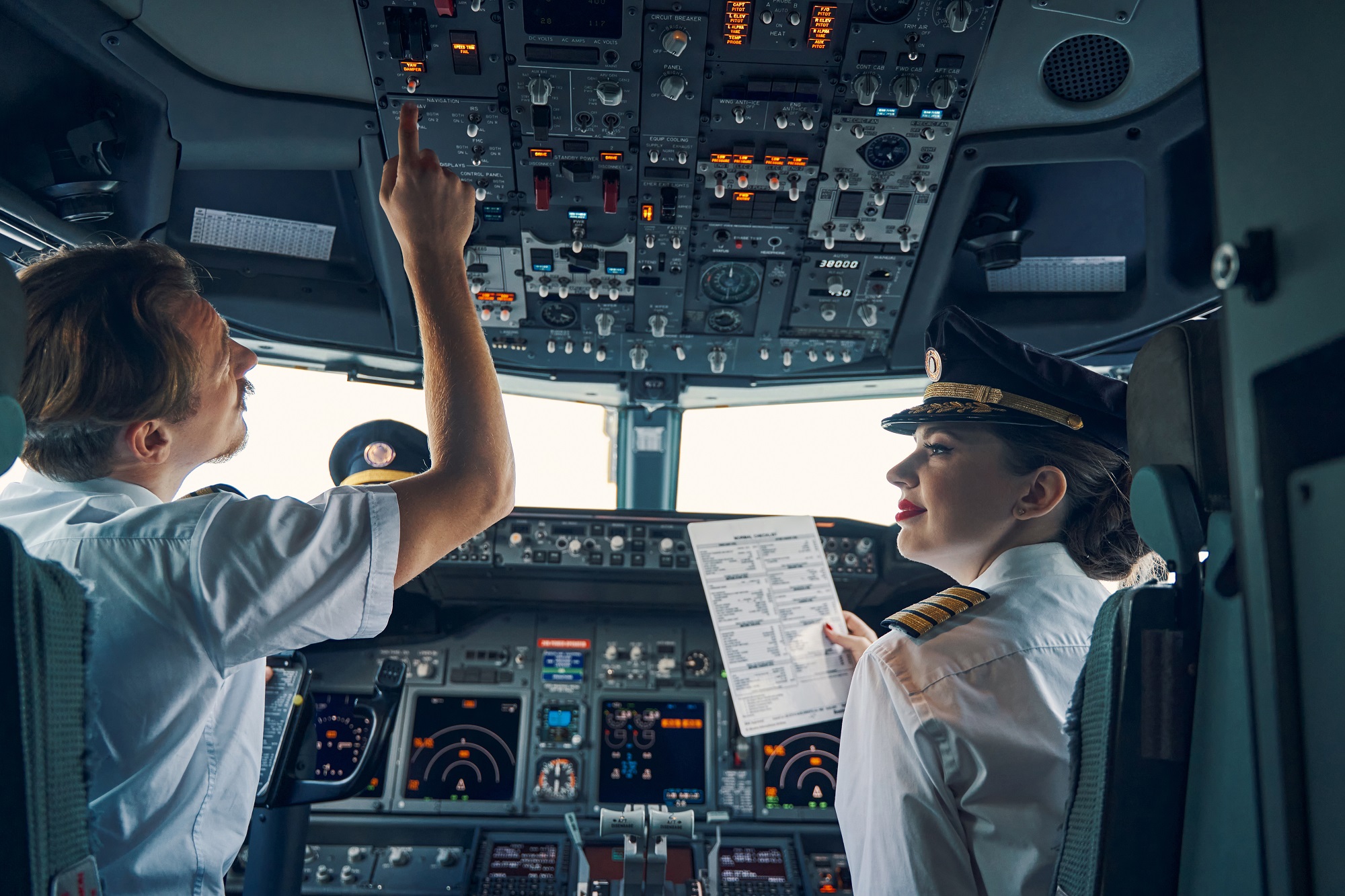As more technology has entered the world of flight and a record number of passengers are taking to the skies every day, aircrew, flight departments, and governments have developed refined and detailed procedures so that the workload of the complex task of flight is divided in a manner that ensures safety. “Who is flying the airplane?” might be an age-old phrase borrowed from popular movies and used for comedic effect, but it has an undoubtedly serious nature in the world of commercial air transport. To understand how pilots divide responsibilities during flight, Jekaterina Shalopanova, Chief Business Officer of Aerviva, explains how pilots manage who is flying the airplane and other important parts of crew resource management (CRM).
“The goal of the crew will be to complement each other to keep workload low so that more attention can be given to each individual task on the checklist,” Shalopanova said. “Use of crew resource management allows pilots to double check and verify their work and the adherence to rules and use of CRM adds a level of safety and quality assurance.”
In air transport, CRM is the practice of splitting responsibility. CRM has spread from the world of aviation to other transportation and businesses, as it produces improvement to any team’s effectiveness. The European Union Aviation Safety Agency (EASA) sets standards for training on CRM, and the rules and regulations have changed with aviation.
“For perspective, aircraft used to have three crewmembers on the flight deck: two pilots and a flight engineer,” Shalopanova said. “The reduction in crew means both pilots must decide their work more effectively to balance responsibility and check each other as the flight goes on.”
During a briefing before the flight, the captain will have a conversation with the first officer and agree upon a plan for who will be at the controls of the aircraft during each stage. The aircrew member who is manipulating the movement of the aircraft is known as the pilot flying, with the other now serving as pilot monitoring.
The pilot monitoring will have several duties, including monitoring fuel burn, setting navigation equipment, monitoring weather and calibrating instruments, accordingly, communicating with air traffic control, and announcing critical information during certain stages of the flight.
“There are a few nuances to this interaction to consider, and each airline will have its own flight manual for specific details for CRM,” Shalopanova said. “The airline’s flight manual is developed from EASA and international regulations regarding the operation of aircraft combined with the airlines additional guidance and will have guidance on crew member duty and responsibility, and specific words and phrases used when transferring responsibilities.”
Best practice to handle the transfer of flight controls will include a verbal enunciation, with the pilot flying transferring the responsibility to the pilot monitoring with a verbal cue such as “You have the flight controls.” This communication will be change in accordance with the airlines flight manual, but when the phrase “you have the flight controls is used,” the aircrew member who is transitioning from pilot monitoring to pilot flying will reply, “I have the controls.”
“This two-way verbal communication enhances the situational awareness of both crew members, and clearly defines responsibility on the flight deck,” Shalopanova said.
For most flights, the first officer will be in charge of flying the aircraft for landing. This is in part because the captain will act as pilot monitoring, communicating with air traffic control and supervising the first officer’s adherence to landing procedure, as each landing will have its own approach procedure that contains specific rules set for flight safety. This includes “minimums,” or the minimum point the aircraft can safely fly with guidance from flight instruments before a decision to land must be made.
When approaching the minimums during a landing, the pilot monitoring will announce the altitude remaining until the lowest point on the approach procedure, and there will be an agreement on a decision to continue landing.
“Announcements of altitude remaining before decision height are ‘call-outs’ that enhance each crew member’s perception and awareness during critical phases of flight,” Shalopanova said.
During both approach and departure, altitude is an important part of separation from other aircraft and the ground. During a departure, the pilot monitoring will announce altitude as the aircraft approaches assigned flight levels. These call-outs will include phrases like “500 to go,” to announce the aircraft is approaching an important altitude.
Call-outs are also made to announce particular speeds. For example, during takeoff, the pilot monitoring will announce when the aircraft has reached a speed acceptable to begin climb, or a speed at which point takeoff can no longer be aborted. The speed at which the aircraft must leave the ground is known as ‘V1.’
“Any point prior to V1, if there was an engine failure, or some other technical complication that would prevent the aircraft from being able to fly, the aircrew would abort the takeoff using full breaking,” Shalopanova said. “The V1 call-out can be made with an automated system with the help of avionics, but the pilot monitoring may provide additional information, which confirms V1 has been reached.”
These announcements verify that the avionics are working and both pilots are receiving the same information, which allows for the crewmembers to act according to procedure and manuals given the agreed upon data. The CRM in this case has added to both crew member situational awareness, while reducing individual work load, which is a measured enhancement to flight safety.
Aircrew use of CRM will translate to the best results for team collaboration. These are skills that rely on communication and can be practiced on the ground and ahead of job interviews with airlines. Demonstrating good CRM also is a telltale sign of good judgement, all of which is important to remain at the controls of aircraft and the job interview process.

